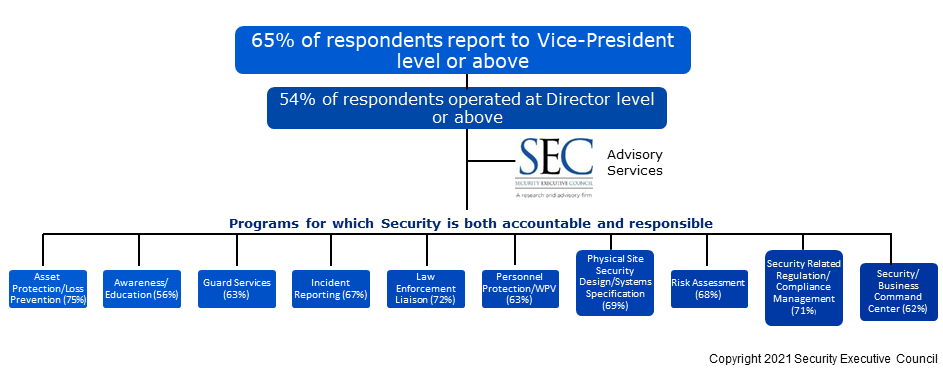Unlike in some other business functions, there is no central standard that lays out a required or ideal organizational structure for corporate security.
Perhaps that's not such a bad thing, since the most effective structure of any corporate security organization should be informed by multiple variables, such as the company's industry, revenue, number of employees, scope, risk appetite, and culture.
Still, when the question arises, whether due to M&A, development of a new corporate security function, or some other reason, it's helpful to see how corporate security in other companies – companies similar to yours – is structured.
The Corporate Security Organizational Structure, Cost of Services and Staffing Benchmark from the Security Leadership Research Institute (the SEC's research arm) presents a trove of data unavailable from any other source in the security industry, from which a security leader can draw a picture of commonly encountered security organizational structures in like businesses.
Below is the start of an organizational chart based on data collected from the SLRI benchmark; the data represent the most frequently chosen answer options.

The report also includes other information that informs organizational structure, such as:
- On average, respondents reported one security employee for every 103 employees (including outsourced workforce).
- 63% of respondents' scope of responsibility extended beyond national borders.
- On average, respondents managed a staff made up of 75% uniformed security.
Note: The data shared in this article represent responses from across all participants regardless of other factors such as industry, budget, scope, and size of company. However, the full report does include many cross tabulations, such as budget by company size (employee count and revenue) and organizational scope.
Next Steps
The information from which this graphic and article are drawn, comes from the 2016 SLRI report. A new version of the Corporate Security Organizational Structure, Cost of Services and Staffing Benchmark is currently underway. The only way to receive the full report results is to participate in the benchmark survey, which is open now but closing soon.
For information on participating, click here.

